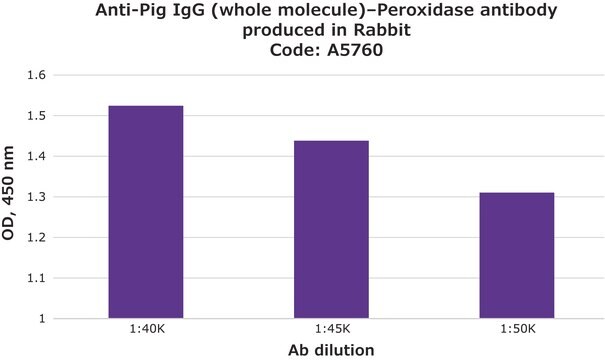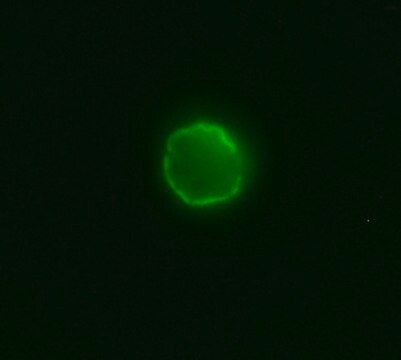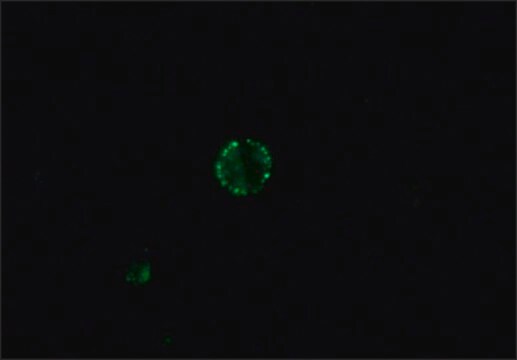General description
Immunoglobulin G (IgG) is a glycoprotein antibody that regulates various cellular immunological responses. Pig IgGs are involved in mediating several pathogenic responses, including the response to Trichinella infections . Anti-Pig IgG (whole molecule)−FITC antibodies can be used to study the detection and localization of pig IgGs. The product is specific for pig IgGs.
Pig IgG is a plasma B cell derived antibody isotype defined by its heavy chain. IgG is the most abundant antibody isotype found in pig serum.
Specificity
Rabbit polyclonal anti-Pig IgG (whole molecule)?FITC antibody reacts with pig IgG in vitro, in pig serum and biological fluids.
Immunogen
Purified pig IgG
Application
Anti-Pig IgG (whole molecule)-FITC antibody is suitable for use in direct immunofluorescence (1:32).
Anti-Pig IgG (whole molecule)-FITC antibody produced in rabbit has been used in indirect immunofluorescence assay.
Rabbit polyclonal anti-Pig IgG (whole molecule)−FITC antibody may be used to detect and quantitate the level of IgG in pig serum and biological fluids by fluorescent techniques. It may also be used as a secondary antibody in assays that use pig IgG as the primary antibody.
Biochem/physiol Actions
IgG antibody is the most abundant serum antibody among immunoglobulins of the immune system. It is found in blood and in extracellular fluid when exposed to an antigen. It protects from bacterial, fungal and viral infections. Maternal IgG crosses from mother to fetus through the placental barrier by pinocytosis to provide passive immunity for the neonate and protect against infections.
IgG crosses the placental barrier, is a complement activator and binds to the Fc-receptors on phagocytic cells. The level of IgG may vary with the status of disease or infection. Fluorescein isothiocyanate (FITC) is a fluorescein derivative (fluorochrome) used to tag antibodies, including secondary antibodies, for use in fluorescence-based assays and procedures. FITC excites at 495 nm and emits at 521 nm.
Physical form
Solution in 0.01 M phosphate buffered saline, pH 7.4, containing 15 mM sodium azide.
Storage and Stability
For continuous use, store at 2-8 °C for a maximum of one month. For extended storage, the solution may be frozen in working aliquots. Repeated freezing and thawing, or storage in "frost-free" freezers, is not recommended. If slight turbidity occurs upon prolonged storage, clarify the solution by centrifugation before use.
Disclaimer
Unless otherwise stated in our catalog or other company documentation accompanying the product(s), our products are intended for research use only and are not to be used for any other purpose, which includes but is not limited to, unauthorized commercial uses, in vitro diagnostic uses, ex vivo or in vivo therapeutic uses or any type of consumption or application to humans or animals.








